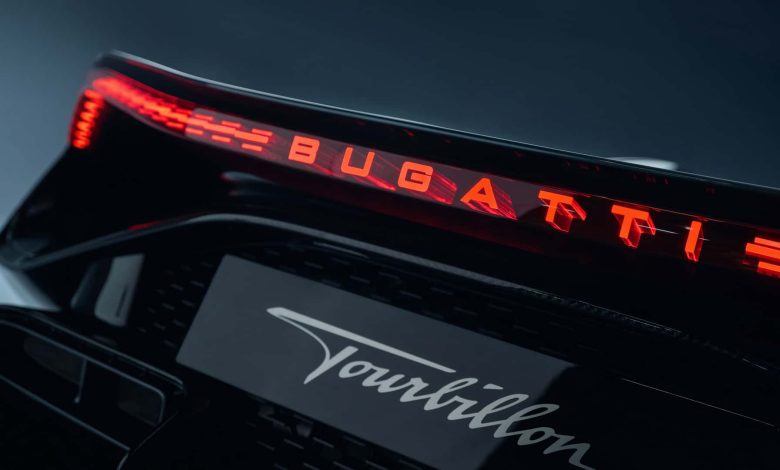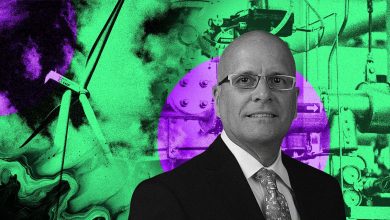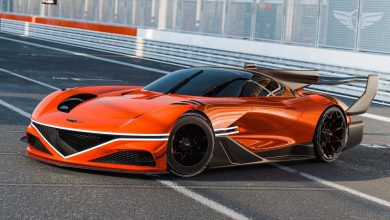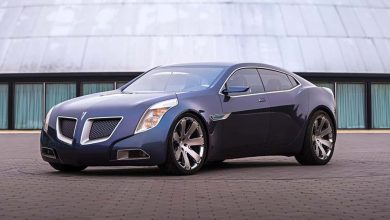Where Does the Bugatti Tourbillon Name Come From?

Veyron. Chiron. Tourbillon. Bugatti is no stranger to seemingly eccentric nameplates. When the company was acquired by Volkswagen Group in 1998, Bugatti immediately cracked open the history books to come up with suitable names for its first two hypercars.
For the Veyron, the company landed on racing driver Pierre Veyron, who piloted a Bugatti to a win at the 1939 24 Hours of Le Mans. It did the same for the Chiron, naming it after Louis Chiron, who won the 1931 French Grand Prix behind the wheel of a Type 51. And many of the iterations that followed had similar historical ties.
But the new Bugatti Tourbillon isn’t named after a racing driver at all, bucking the trend of the first two models. There was no Jim Tourbillon who raced Bugattis at the turn of the century. Since this is the first Bugatti in 20 years not powered by a W-16, the company felt this new model deserved an entirely new name—one that has nothing to do with Bugatti’s lineage.
So where exactly does the name Tourbillon come from?
The name Tourbillon originates from late 1700s watchmaking. Tourbillon is French for “whirlwind” or “whirlpool,” and it’s a specific mechanism used in high-end timepieces to eliminate timekeeping inconsistencies caused by gravity. When you wear a watch on your wrist, the watch’s movement keeps better or worse time depending on its position in space. By constantly rotating a watch’s escapement and balance wheel (the rapidly moving bits of a mechanical watch) in a cage-like structure, you can average out these inconsistencies for more accurate timekeeping overall.
In short, a tourbillon essentially fights the effects of gravity—an apt description for a hypercar that does much of the same.

Jacob & Co. Bugatti Chiron Tourbillon Watch
The tourbillon was invented in 1795 by a sort-of-Swiss, sort-of-French, sort-of-Prussian watchmaker Abraham-Louis Breguet, who essentially spent his working life in France, inventing every major breakthrough in modern timekeeping. By the end of his life, Breguet would become the most important figure in all of modern horology.
He patented the tourbillon in 1801, a significant but fractional sliver of his legacy.
In 1920, Alfred Helwig invented the flying tourbillon—which removed the bridge (similar to an automotive crossmember) that supports the tourbillon, exposing the tourbillon’s rotating mechanism for aesthetic purposes. And in 1947, the brand Omega created the first tourbillon wristwatch—the 30i Tourbillon—a rare timepiece that has sold for more than $1.5 million at auction.

So why did Bugatti decide on this name? Apart from it sounding cool (which it does) and keeping the traditional “on” suffixes of the Veyron and Chiron before it, Bugatti wanted to go in a new direction that better integrates “modern fashion and lifestyle” into its new supercar. In fact, Bugatti already offers a tourbillon timepiece.
“The name Tourbillon was chosen as the perfect encapsulation of this car’s character,” the company notes. “A completely original creation without compare, it is both complex and beautiful, helping to counteract the effects of gravity on a watch to ensure more consistent time-keeping. And over 200 years later it is still revered as the pinnacle of watchmaking.”
With that in mind, the Bugatti Tourbillon has several not-so-subtle touches paying tribute to its timepiece-inspired name. The gauges were designed with the help of Swiss watchmakers to a maximum tolerance of 50 microns—with some details toleranced to as little as 5 microns. And more than 600 titanium pieces make up the unique three-tier structure just above the steering wheel, with gemstones like sapphires and rubies subtly embedded into the face of each cluster. The entire thing weighs just 1.5 pounds.

The center console comprises crystal glass developed over 13 separate stages to ensure maximum clarity. The aluminum fixtures were anodized and milled from a single piece of metal. Even the pull-to-start knob—a nod to classic Bugattis—was milled from the same piece of aluminum.
If this represents a next step for Bugatti, watchmaking’s crown jewel bestows a fitting name for the occasion.
Read the full article here








